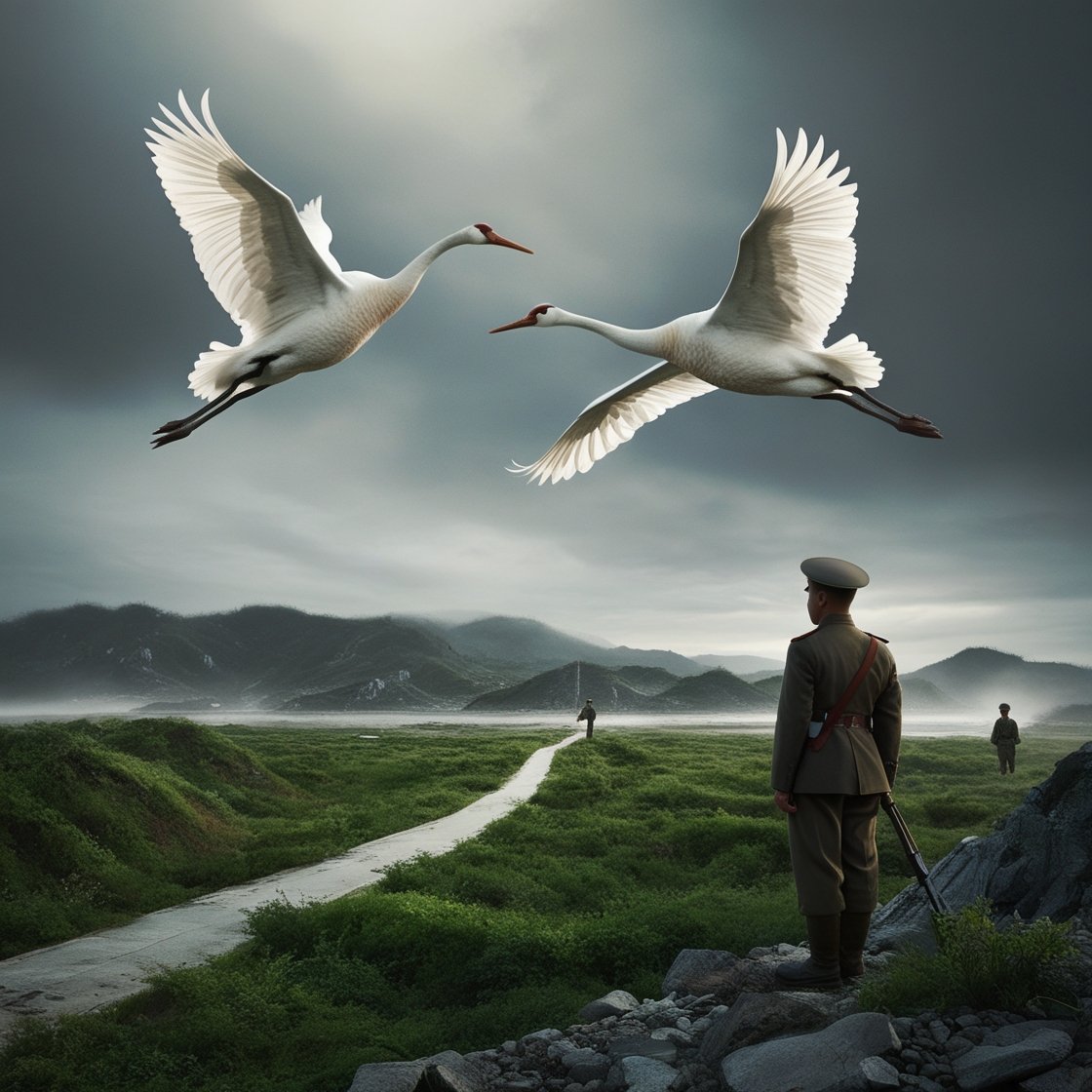While the Korean Peninsula is often viewed through the lens of political tensions between North Korea and South Korea, it is also home to a unique and diverse range of wildlife. The animals that inhabit both sides of the DMZ (Demilitarized Zone) and beyond tell a fascinating story of survival and adaptation in a region divided by borders but united by nature.
Wildlife in the DMZ: A Natural Haven
The DMZ, a 160-mile stretch of land separating North and South Korea, has inadvertently become one of the most well-preserved areas of wilderness in the world. Due to the absence of human activity, this heavily fortified zone has allowed wildlife to flourish, creating a safe haven for many endangered and rare species.
- Amur Leopards and Siberian Tigers: Once roaming freely across the Korean Peninsula, these majestic predators are now critically endangered, with only a few remaining in the wild. Both North Korea and South Korea claim to have sightings of these elusive animals within the DMZ, although they remain rare. Conservationists hope that the DMZ’s isolation may offer these species a chance to recover.
- Red-Crowned Cranes: These beautiful, graceful birds, considered a symbol of peace in Korea, are regular visitors to the wetlands of the DMZ. Each winter, they migrate to this region to feed and nest, free from human interference. Both North and South Korea celebrate the crane as a symbol of hope and unity.
- Asian Black Bears: The lush forests of the DMZ also provide a habitat for the endangered Asian black bear. Though sightings are rare, these bears are known to thrive in the quiet forests, far from human threats.
North Korean Wildlife: A Hidden World
North Korea’s isolation from much of the world means little is known about the exact state of its wildlife, but the country’s mountainous landscape and diverse ecosystems suggest it is home to a variety of animal species.
- Wild Boars and Deer: Reports from defectors and visitors to North Korea suggest that wild boars and deer are common across the country’s forests and rural areas. These animals are often hunted for food, but in the more remote regions, they thrive relatively undisturbed.
- Bird Species: North Korea’s diverse wetlands and mountainous regions are home to a wide array of bird species, including the endangered Baikal teal and the whooper swan. Despite limited data, North Korea is considered an important stopover for migratory birds.
- Sea Life: North Korea’s coastal waters are rich in marine life, including various species of fish, seals, and dolphins. However, overfishing and environmental degradation pose a threat to these marine ecosystems.
South Korean Wildlife: Balancing Conservation and Urbanization
South Korea, with its rapid urbanization and industrial growth, has faced significant challenges in preserving its wildlife. However, concerted efforts in conservation have helped protect many species.
- Korean Water Deer: Known for their small size and distinctive tusks, the Korean water deer is a common sight in South Korea’s rural and forested areas. While once heavily hunted, conservation efforts have helped stabilize their population.
- Jeju Island’s Wildlife: South Korea’s Jeju Island is home to a unique ecosystem, with species like the Jeju Black Cattle and the Hallasan Salamander. The island’s volcanic landscapes and mild climate support a wide range of plants and animals not found elsewhere in the country.
- Conservation of Migratory Birds: South Korea has become a critical stopover for migratory birds along the East Asia-Australasian Flyway. Wetlands like the Geum River Estuary are key resting spots for species such as the black-faced spoonbill and the Far Eastern curlew.
A Shared Future for Wildlife Conservation
While the political divide between North and South Korea remains a significant barrier to cooperation, wildlife has no concept of borders. The animals that roam both sides of the Korean Peninsula are a testament to the resilience of nature in the face of conflict and division. In recent years, there have been growing calls for joint conservation efforts to protect the wildlife within the DMZ and beyond.
Organizations from both sides of the border, along with international conservation groups, are advocating for the creation of a transboundary nature reserve within the DMZ. Such a project would not only protect endangered species but could also serve as a bridge for peace between the two nations.
Conclusion: Animals as Ambassadors of Peace
The animals of North and South Korea, from the rare Amur leopard to the migratory cranes, offer a glimpse of hope in a region marked by decades of tension. These creatures continue to thrive in the most unexpected places, reminding us that nature endures even in the face of human conflict.

